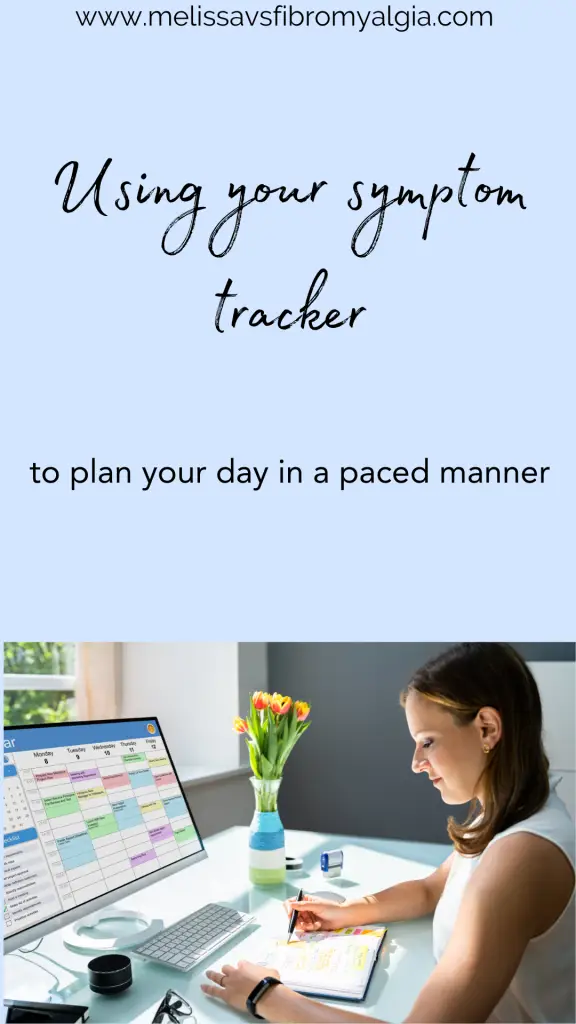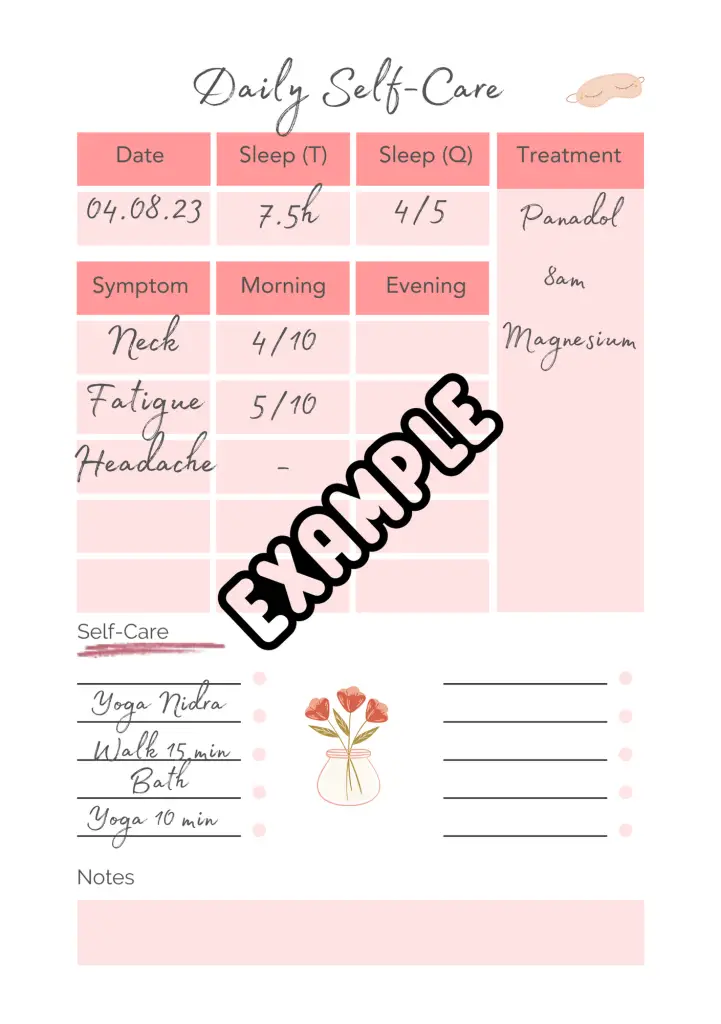You have likely heard of the idea of pacing. But it’s a massive concept. And it can be easy to relegate it to an abstract idea.
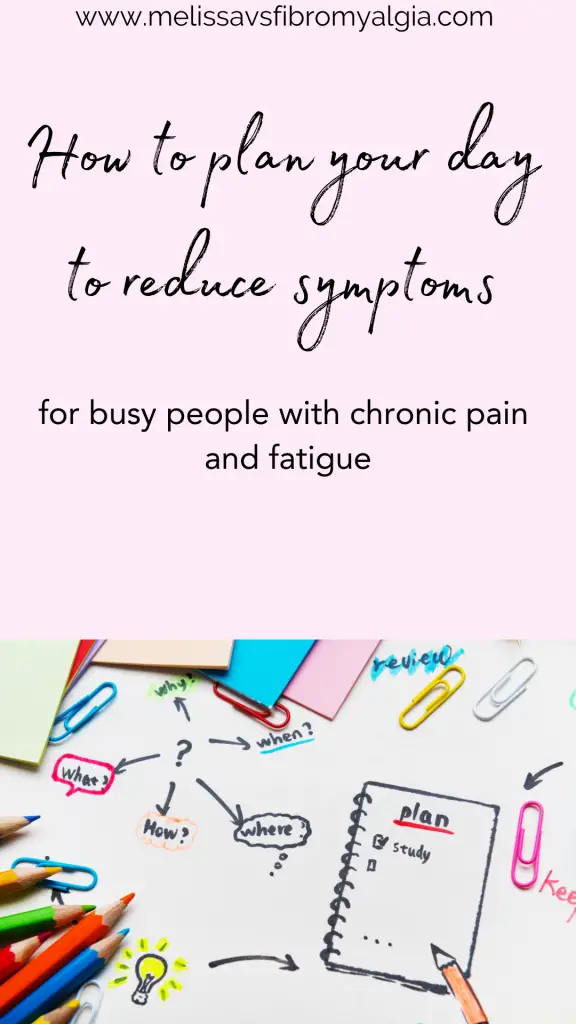
But, if you use it correctly, it will help.
So how can we use our symptom tracking to plan our day, using the principles of pacing?
I will walk you through how to plan your day here.
First – Your Pacing Guidelines
You need to know when is your best bedtime and wake time. How many hours you are capable of working (home work, voluntary work, or paid work). What your activity to rest ratio looks like (how many hours are you work and then how long are you resting?).
It’s a big thing. For a QuickStart, especially if you are super busy right now. I’ve got a free pacing training here for you.
In the meantime, this system will help you get started. Read on!
Second- Symptom Tracking
It’s important to find a way to track your symptoms that works for you. I have many printables and journals that can serve as ideas. However you do it, you need this data to pace well.
I recommend tracking
- Sleep quality and quantity
- Key symptoms
- Self-care mechanisms
- Medicines/supplements
- Experiments
- Menstrual cycles (if you have these)

Take a few minutes to check in with your morning situation in your chosen symptom tracking method. I tend to do this after my morning routine. I get up 15 minutes before my children and sit with a cup of coffee and some toast. Quiet time is important time for me.
Third – Plan Your Day
Use the data from your symptom log to plan your day. Take a few minutes each morning. Once you get a sense of your patterns, you can fill this in the night before. But if you’re anything like me, how the night went will change your day drastically.
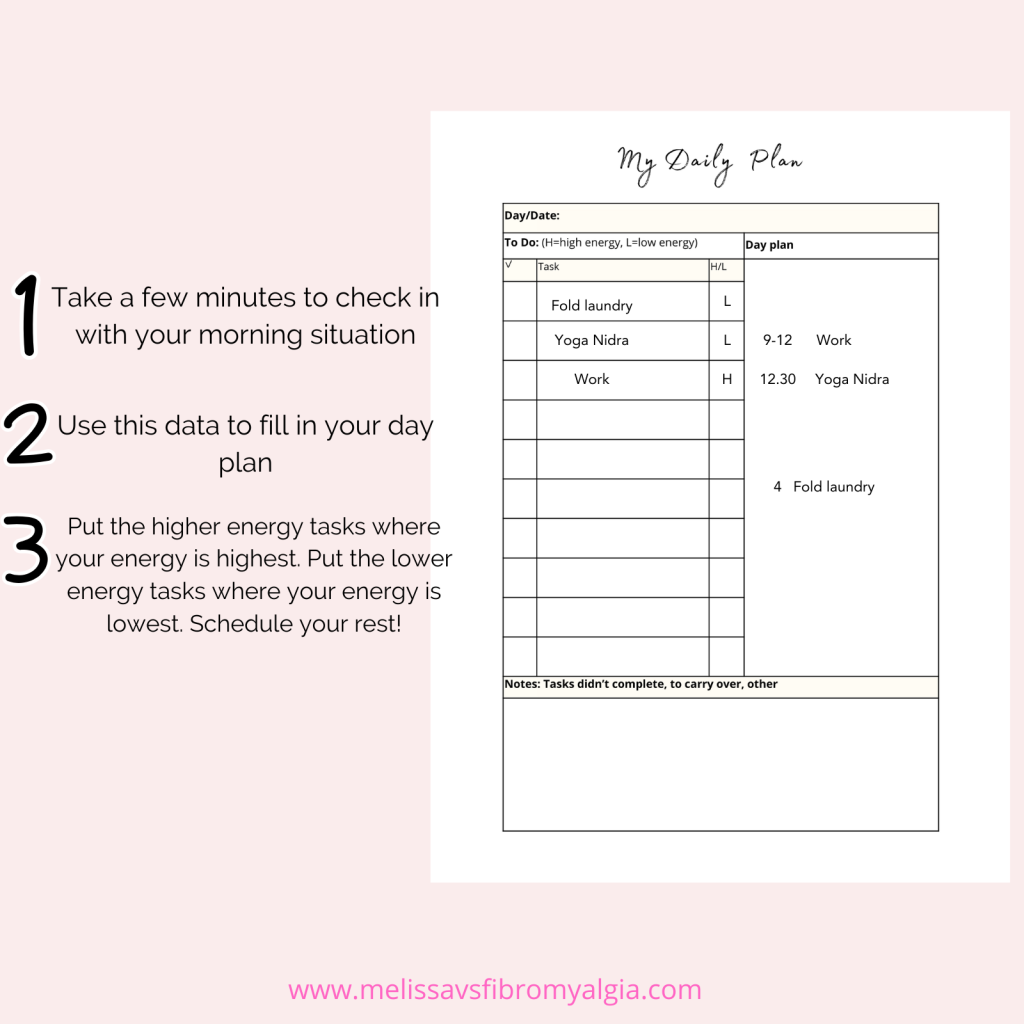
Try to put the tasks that require higher energy levels where your energy levels are higher. And put the tasks that require lesser energy levels, when you typically have less energy.
For example I will sit down and fold the laundry (lower energy task) in the early evening. My main activities need to be done in the morning. Especially thinking-based activities. You may do better in the afternoon.
Don’t forget your rest breaks and your self-care. If your symptom levels are higher today, add in extra or longer rest breaks. If your symptom levels are lower DON’T cram in more!
I’m a massive fan of giving ourselves 10 minutes a day for things like yoga, breathwork and meditation. It’s easy to fit in.
Fourth – Check In
Take some time at the end of the day to fill in your symptom log, transfer over the tasks needed, and honestly see if you planned well.
Did you over plan? Is there a certain task that you thought was lower energy but actually took more? Do you need more rest/down time?
Use this data for tomorrow.
The Journal I Used in This Post
Get On Top Of Your Life Journal was created specifically so that you can use this system. Track your health and plan your day. Use the data to make your life better/easier.

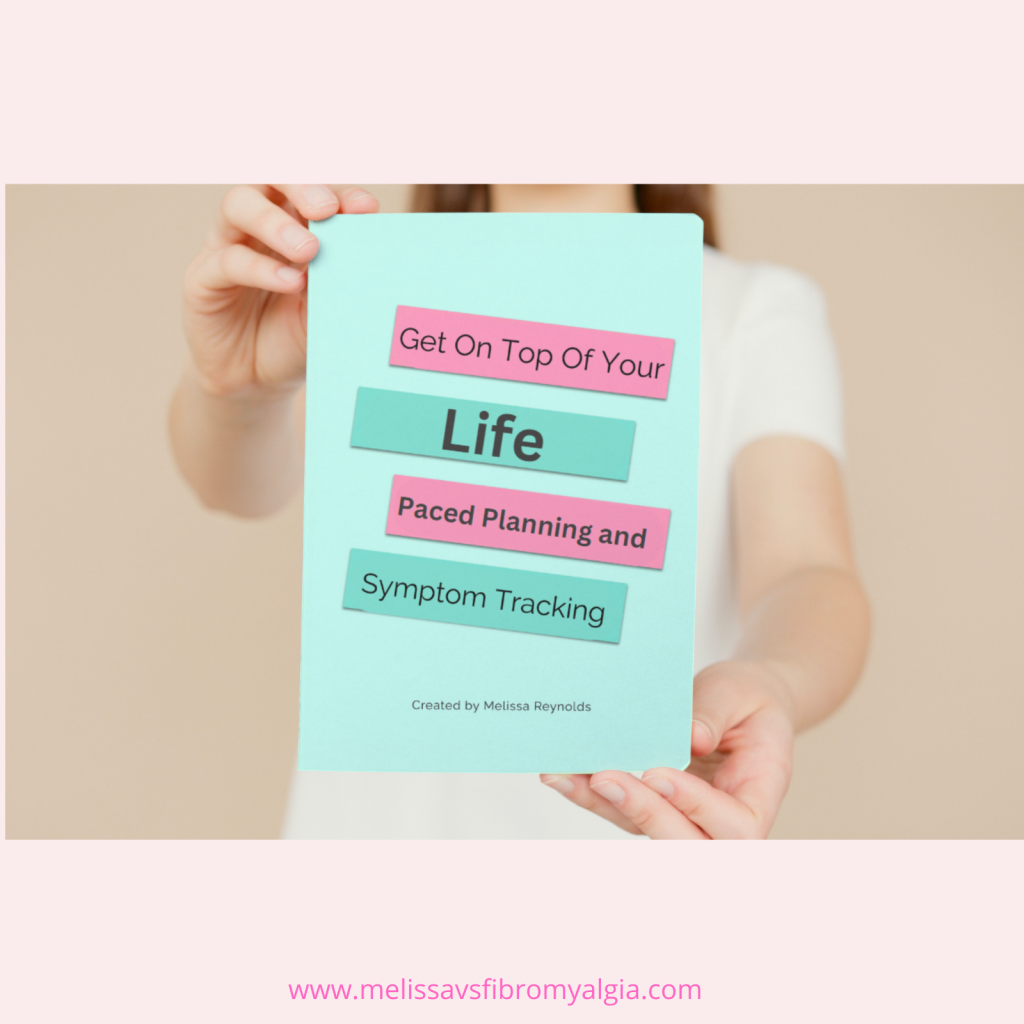
I created this journal specifically to help you do this well. I know how hard it is to use the principles of pacing in a busy life.
So tell me if you have used any of these tips or if you’re going to try to plan your day according to your symptom log?
